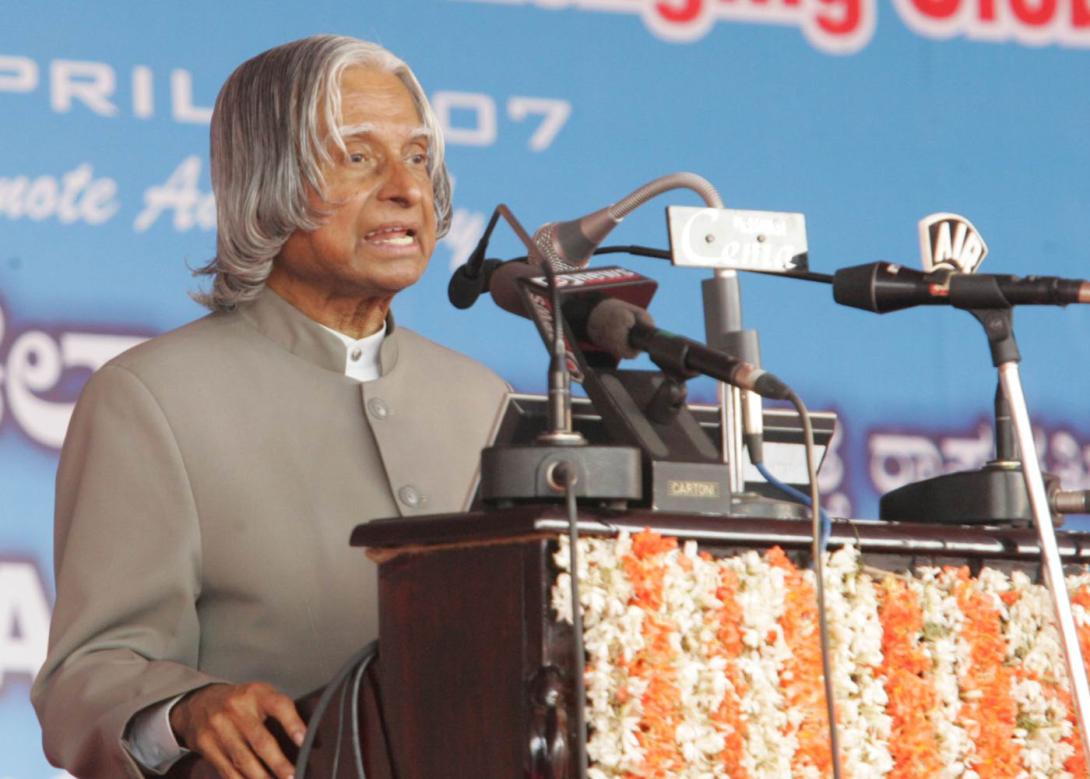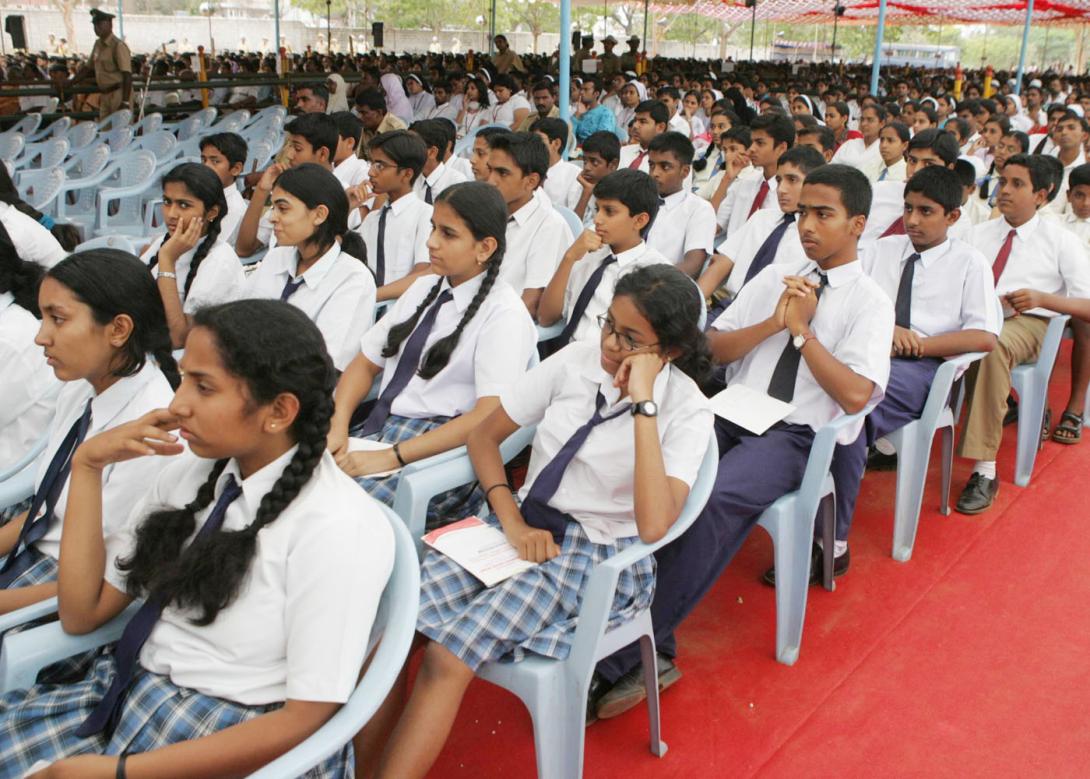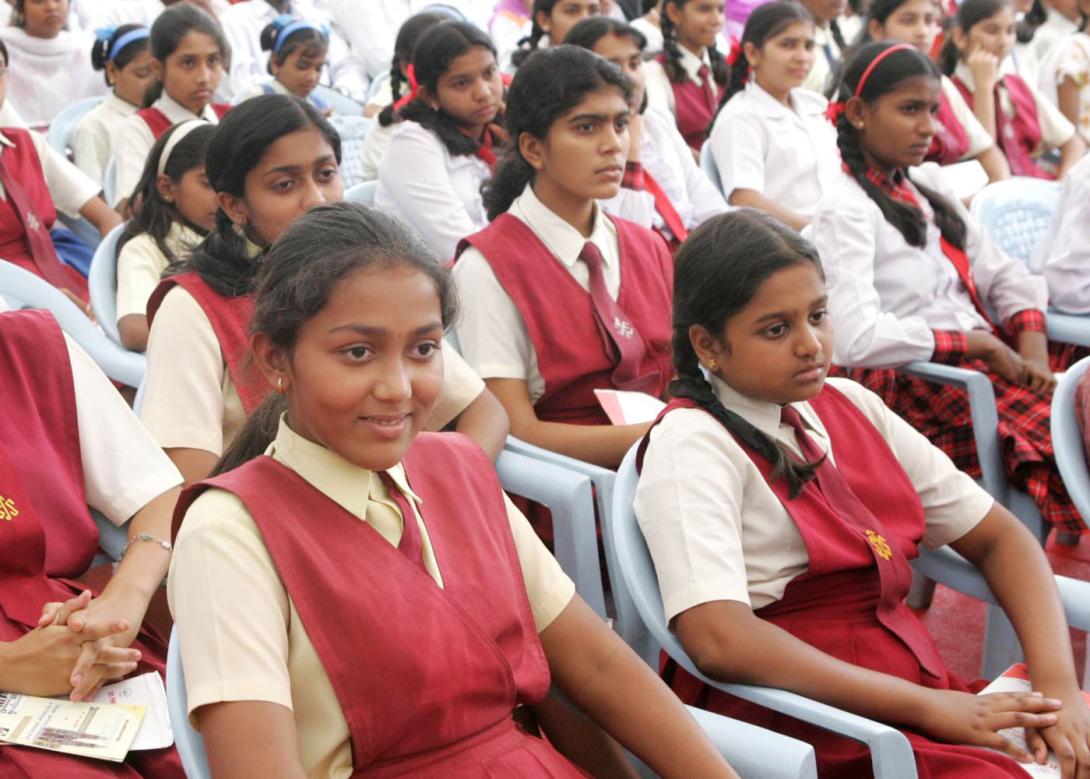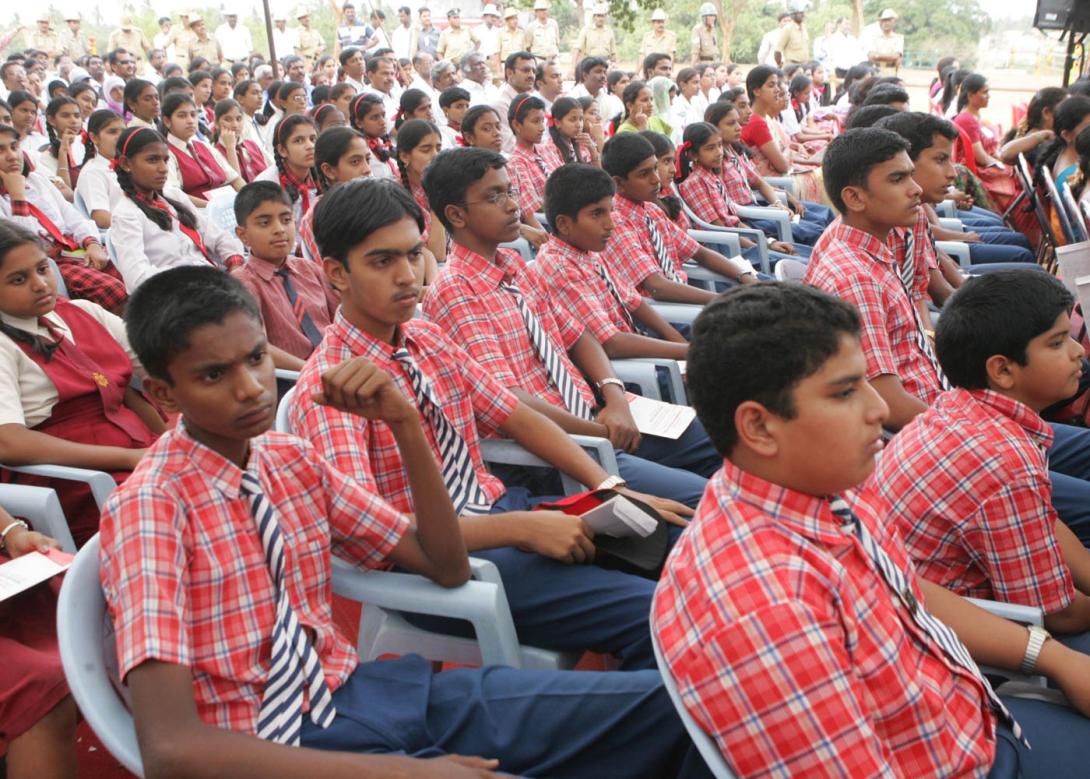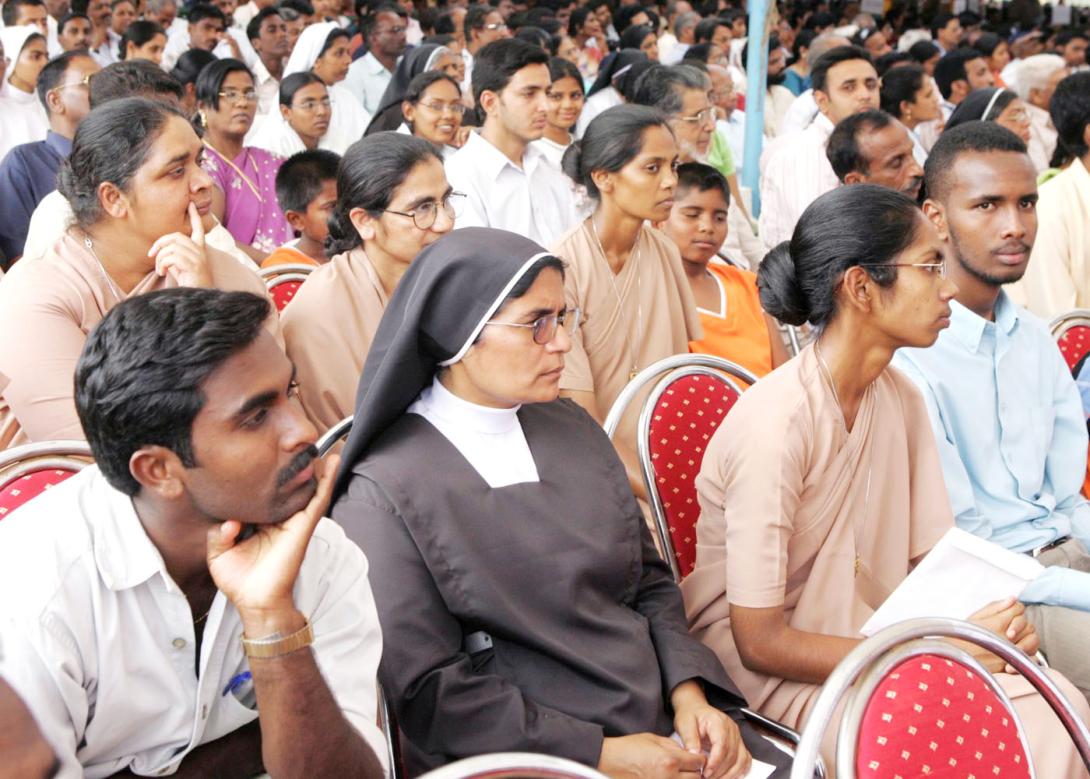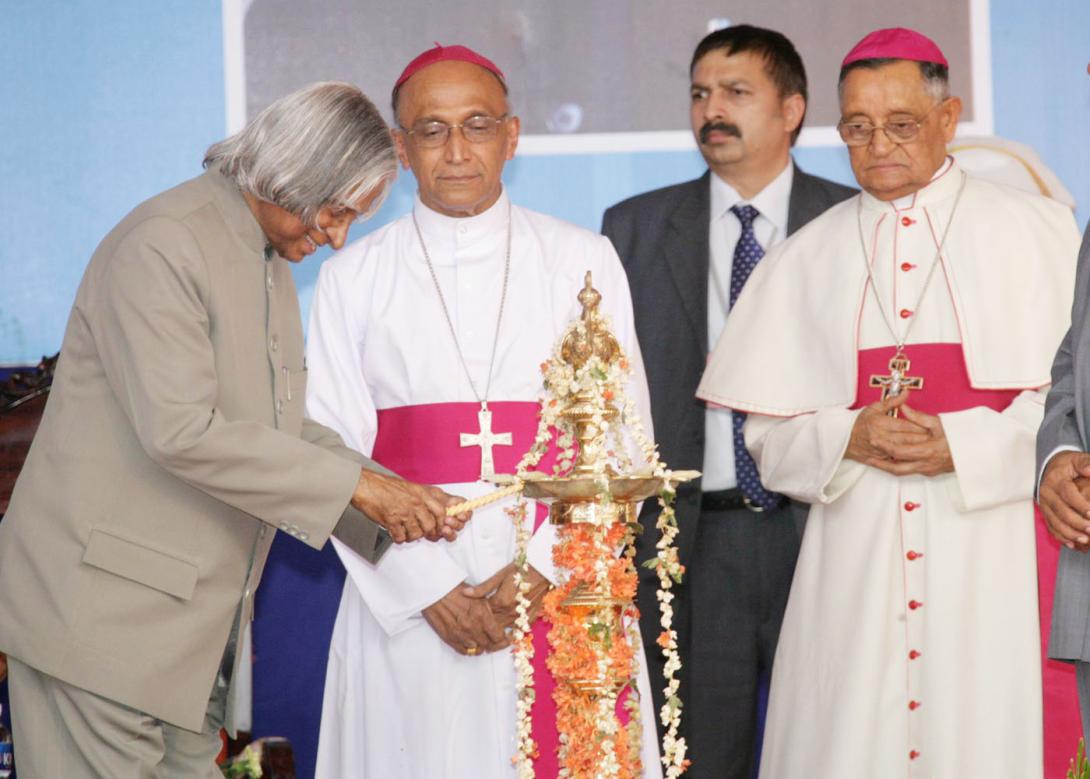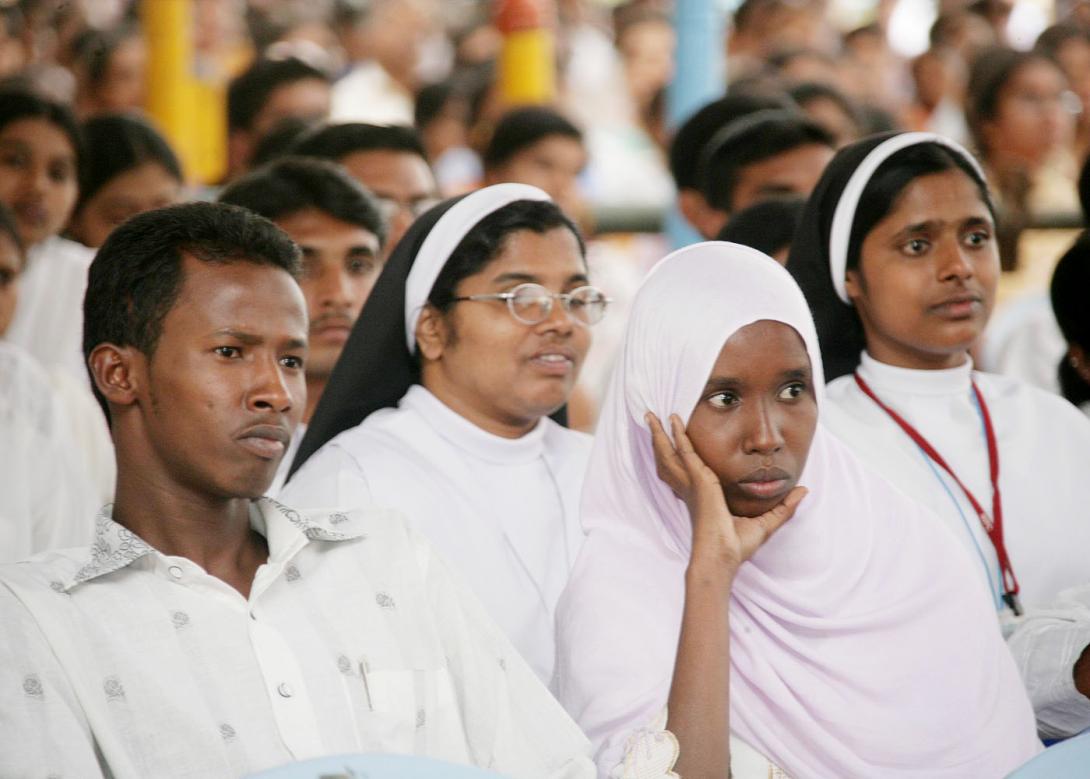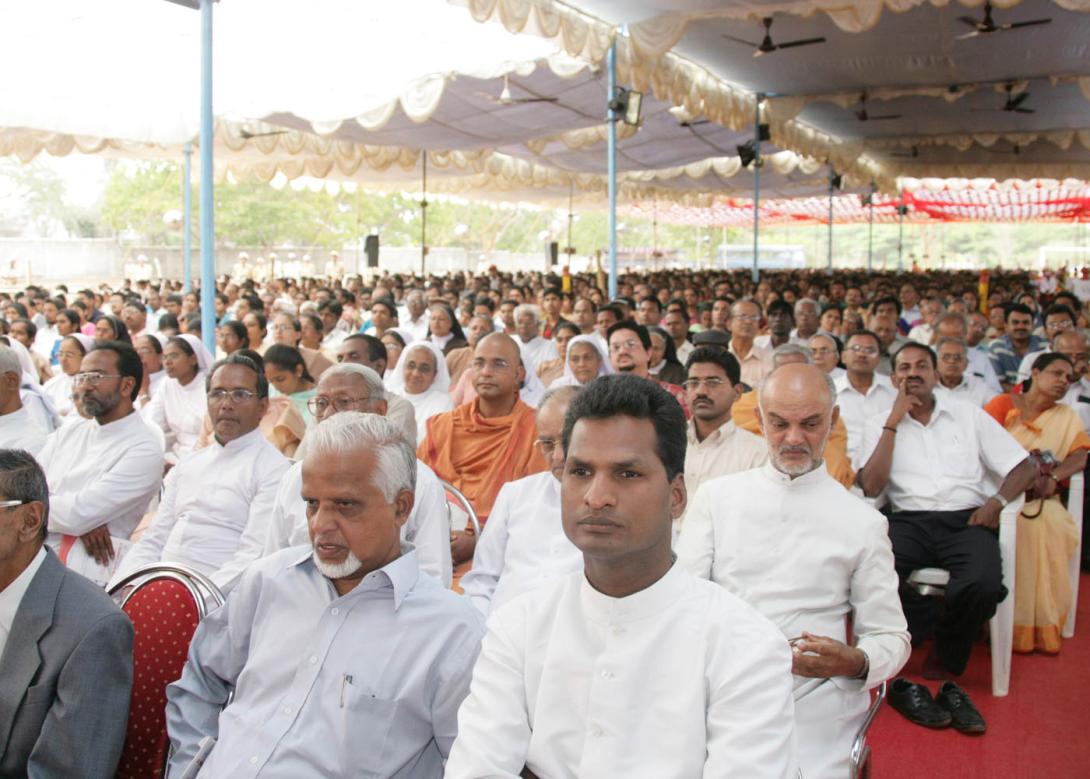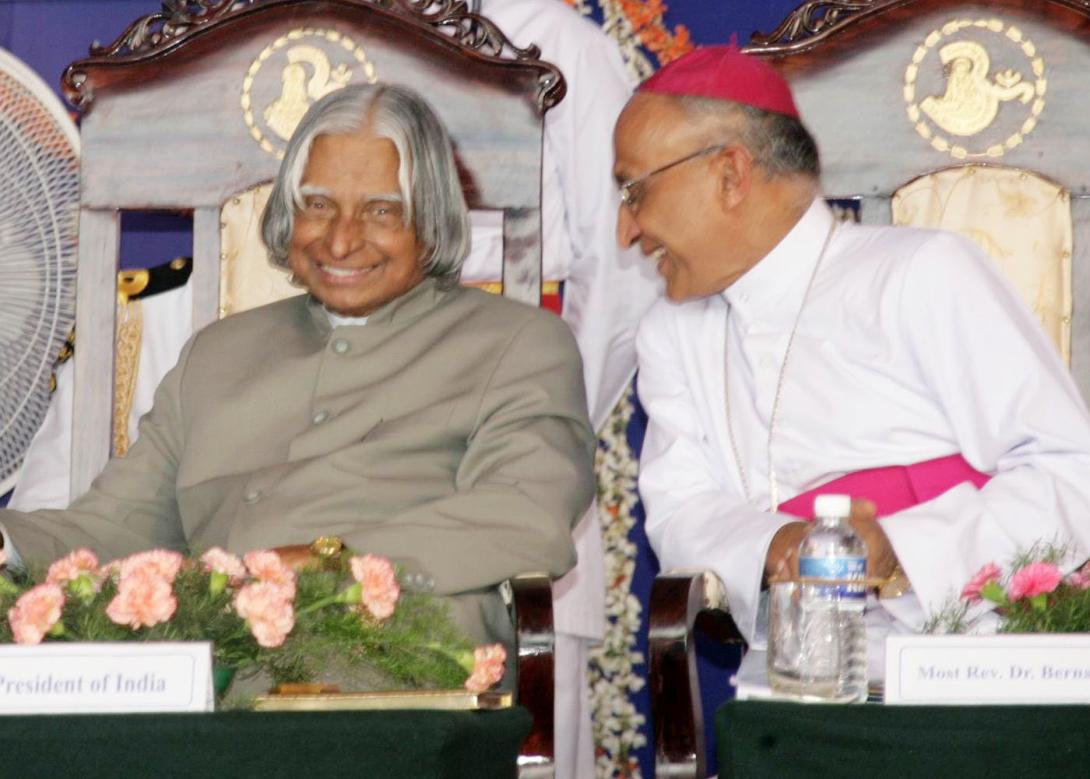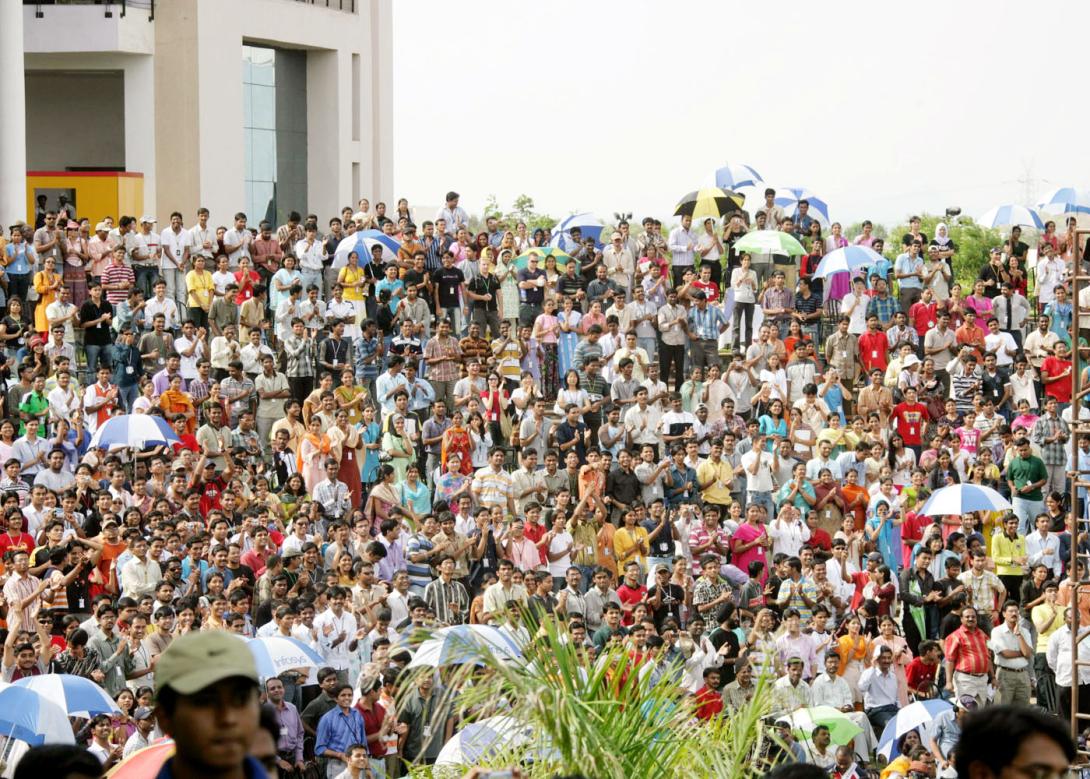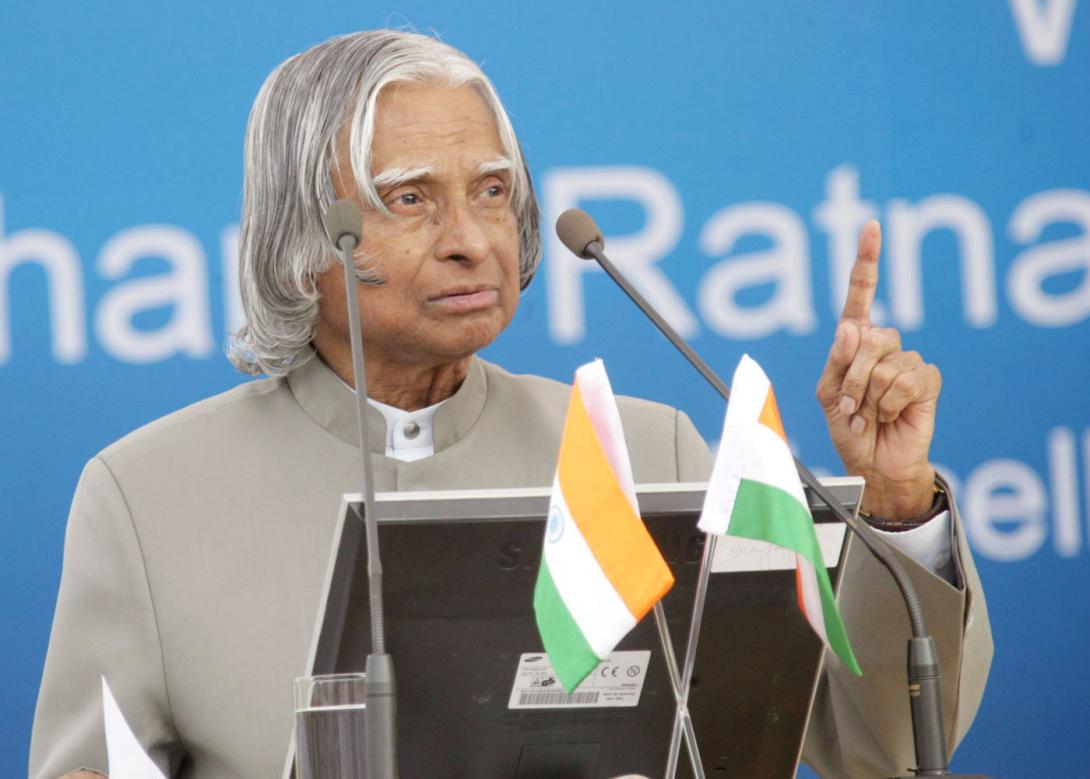Address At The Infosys Global Education Centre Mysore
Mysore : 08-04-2007
World Knowledge Platform
"Small aim is a crime"
I am indeed delighted to address and interact with the members of Infosys Global Education Centre. I greet Shri Narayana Murthy, Smt Sudha Murthy, Software specialists, Project executives, Trainers and Trainees.
Growth of Knowledge Society
Economic growth for India is fundamentally tied to societal transformation in the knowledge products and service sector. Of course this in turn strengthens agriculture and manufacturing through innovation and value addition. Our movement towards Developed India 2020 is to generate revenue not only from raw material, agricultural and industrial products which are the hallmarks of an agricultural society. We have to move upwards to an information and knowledge society involving explicit knowledge through knowledge intensive products and have manufacturing sector and high value agriculture based on new knowledge and skill. Information and communication technology have to be widely deployed in our transformation strategy along with newer technologies like Biotechnology, Nano-technology, advanced materials in addition to new approaches of clean technologies.
Changing Pattern of Society
When the world was moving from the industrial to information and knowledge era, we witnessed a changing pattern in the sectoral share of GDP and the number of people employed in each sector. The share of Gross Domestic Product (GDP) percentage has undergone a considerable change. Contribution of agriculture to India's GDP has reduced from 39% to 22% during the period 1979 to 2004. During the same period contribution of manufacturing sector has moved from 24% to 27% and whereas the contribution from the services sector has increased from 37% to 51%, it includes ICT Sector. There has been considerable change in the employment pattern also. The percentage of people employed in agriculture has come down from 64% to 54%. Simultaneously, the percentage of people employed in manufacturing has gone up from 15% to 19% and in the service sector from 20% to 27%. This trend has to continue and by 2020 our employment pattern should aim at 44% in agriculture, 21% in manufacturing and 35% in service sectors. The displacement of 10% people from agriculture sector has to be facilitated through skill enabling for undertaking value added tasks in the rural enterprises so that migration to urban area is reduced. Instead of the person from the rural areas going to urban towns in search of jobs in manufacturing and services sectors, PURA (Providing Urban Amenities in Rural Areas) facilitates creation of employment in the rural areas itself. PURA achieves this by providing physical, electronic and knowledge connectivities to a cluster of villages thereby leading to their economic connectivity and prosperity. I would suggest the ICT companies to spread the establishment of new Unit in Tier-2 and Tier-3 cities and PURA complexes. Now, I would like to talk about futuristic computer systems.
Can computer challenge the Brain?
Most of the computers of the future and accessories will be micro sized, wearable and will have wireless communication with each other. Moderately priced PCs capable of performing about a billion calculations per second today will be able to perform about a trillion calculations per second within next 10 years. It is predicted that by 2019, the computational ability of an ordinary PC would exceed the capability of human brain. By 2029, the capability of a normal PC would be around 1000 times that of the human brain. (Reference: The age of spiritual Machines by Ray Kurzweil)
My view is definitely the creativity of the human mind will always be superior to the most powerful computers in the horizon. Creativity has to be the business of IBM and other knowledge organizations.
By the end of this century, there would be a strong trend towards convergence of human thinking with the world of machine intelligence that the human species initially created. When there would no longer be any clear distinction between human and computers, how would the molecular biologists help us to retain the supremacy of man over machine? Computers are going to give us a challenge. It is not only for the ICT and biotechnologists; the entire scientific community would have greater responsibility of keeping the mankind above the man-made computers, human creativity being the prime mover. Organizations like Infosys have to perform and grow in this dynamic and competitive environment.
Convergence of Technologies
The information technology and communication technology have already converged leading to Information and Communication Technology (ICT). Information Technology combined with bio-technology has led to bio-informatics. Now, Nano-technology is knocking at our doors. It is the field of the future that will replace microelectronics and many fields with tremendous application potential in the areas of medicine, electronics and material science. When Nano technology and ICT meet, integrated silicon electronics, photonics are born and it can be said that material convergence will happen. With material convergence and biotechnology linked, a new science called Intelligent Bioscience will be born which would lead to a disease free, happy and more intelligent human habitat with longevity and high human capabilities. Convergence of bio-nano-info technologies can lead to the development of nano robots. Nano robots when they are injected into a patient, my expert friends say, it will diagnose and deliver the treatment exclusively in the affected area and then the nano-robot gets digested as it is a DNA based product. Let me share with you some thoughts on knowledge products which can be taken up by Indian ICT companies.
Mission of knowledge Products
We need to attain self-reliance in the infrastructural software sector with the knowledge products, where the domain applications can be developed and deployed for the services sector. It is essential to channelise our resources from the industry, academic institutions and research organizations and setting up the incubation centers in collaboration with each other in different parts of the country. These incubation centers will continuously feed the technologies to the industries. The student community is a big resource. The IT industries in their own interest; have to equip the educational institutions to harness the power of the student community. For promoting competitiveness with research and innovation we need an effective triangular partnership between industries, researchers from academia and the students community. This will enable us to develop innovative knowledge products in the following domains:
Partnership in mission mode
Now, I would like to discuss the experience the nation has gained by bringing together the core competence of two nations resulting in a state-of-the-art world class system having a global market and connectivity mission with 53 African nations.
An International Joint Venture - BRAHMOS: In order to achieve global competitiveness, the product must be world class with high quality, cost effective and must be available in time within the shelf life of the product. I would like to share a unique experience of design, development, production and marketing of a missile system - BRAHMOS, an Indo-Russian joint venture. What we have achieved through this venture is the development and realization of a world-class product using the synergy of technological competence and consortium of industries of partner countries. The BRAHMOS missile is the fastest operational cruise missile existing in the world today and can be launched from any type of platform - land, sea, and air and precisely reach the targets either on land or at sea with high lethal effect. The missile has undergone twelve successive successful flight trials and has been inducted by the Indian Navy. In addition, the product being internationally competitive, it is able to service a large market with availability in time and state of the art performance at reduced cost per unit. With minimum incremental investment the product has been developed and led to production and induction, at a relatively short time frame, well ahead of prescribed schedule. This has enabled early entry of the product into the world market well before any competitor could emerge. This proves that if the core competencies of nations are synergized, best of knowledge products can emanate well ahead of time.
Pan African e-Network
During the year 2003-04, I visited African countries such as Sudan, Tanzania, Zanzibar and South Africa. I addressed the Pan African Parliament on 16 September 2004, at Johannesburg, South Africa which was attended by Heads of 53 member countries of the African Union. Based on my study of connectivity needs of African countries in communication, healthcare and education, I proposed the concept of Pan African e-Network using seamless and integrated satellite, fiber optics and wireless network connecting all the 53 African countries.
Twelve universities (7 from India and 5 from Africa), seventeen super specialty hospitals (12 from India and five from Africa), fifty three tele-medicine centers and fifty three tele-education centres in Africa will be connected through the Pan-African e-Network project. The pilot project on tele-education and tele-medicine in Ethiopia has already been commissioned. One of our Indian Universities has taken up the MBA Course for 34 Ethiopian students of Addis Ababa and Harmaya Universities. As regards, tele-medicine, the specialists from CARE Hospital, Hyderabad are providing one-hour live tele-consultation to doctors in Black Lion Hospital, Addis Ababa in Cardiology and Radiology since November 2006. The Pan African e-Network will primarily provide Tele-Education, Tele-Medicine, Internet, videoconferencing and VOIP services. It also supports e-Governance, e-Commerce, infotainment, resource mapping and meteorological services. Each remote location will be able to access the Internet through the network by linking the HUB to Internet backbone. Using this network the Heads of the State in all the 53 countries will be connected for instant communication. The network is designed to have 169 terminals and a central hub to deliver tele-education and tele-medicine services. The proposed network will utilize state-of-the-art technology and can be integrated with the latest broadband technologies like Wi-Fi and Wi-Max. The network is scalable to support different applications catering to increased number of users. 22 countries will be connected by the first half of 2007 and the rest will be operationalized by early 2008.
World Knowledge Platform
From these international partnership experiences, we have evolved what is called a World Knowledge Platform, which will be the launch pad for many innovations that are waiting to be unearthed only by the combined power of all the scientists and technologists drawn from many institutions both in India and abroad.
Missions of World Knowledge Platform: The convergence of Bio, Nano and ICT is expected to touch every area of concern to the humanity. The "World Knowledge platform" will take up the missions, in some of the areas given below, which are of utmost urgency to all of us to make our world a safe, sustainable and peaceful and prosperous place to live:
1. Energy: exploration, storage, production and conversion
2. Water: treatment and desalination
3. Healthcare: Diagnosis, drug delivery system
4. Food: preservation, storage and distribution
5. Knowledge products :Hardware, Software and Networking Products
6. Automobile: Hardware and embedded software integration
In addition to the areas mentioned above, areas such as electronics, ICT and Automobile Sector may also be focused especially in the areas of design, development leading to productionization for meeting the market demands of many nations. The core competence of India is software and the core competencies of the other partner nations could be hardware and software. This can lead to design, development and marketing of world class systems that is equally dominated by the software intelligence and hardware innovation. The world knowledge platform will also evolve a virtual design centre with the participation of collaborating institutions. Members of Infosys Global Education Centre, Mysore can definitely think in terms of creating such a Centre as a part of the collaborative programme.
Conclusion
Let us think together, what can be the tasks of Infosys Global Education Centre. Three distinct areas can be identified. They are,
(i) Transforming India into knowledge society with innovation as the thrust area influencing the information society, industrial society and agricultural society.
(ii) As you are aware India has 540 million youth below 25 years which is an important asset for the planet Earth. This dynamic resource will have two components. One, at the secondary education level supplemented with high quality vocational skills and the other at the university level. Knowledge workers will come out of this Global Human Resource Cadre. Definitely, Infosys Global Education Centre can participate in the evolution of trained human cadre.
(iii) Participation in the "World Knowledge Platform" will empower the Infosys and the partner institutions with the collective core competence as a base.
For success in all these missions, which we have discussed so far, we need creative leaders. Creative leadership means "exercising the vision to change the traditional role from the commander to the coach, manager to mentor, from director to delegator and from one who demands respect to one who facilitates self-respect". I am sure Infosys Global Education Centre will focus its attention on creating large number of creative leaders.
Such leaders in organizations will facilitate global competitiveness and help in creation of knowledge societies in the Planet. Particularly the mission of creative leaders will be the evolution of enlightened societies through the "World Knowledge Platform".
Wish you all the best. May God Bless you.
Seven Point Oath
1. I realize, I have to set a goal in my life. To achieve the goal, I will acquire the knowledge, I will work hard, and when the problem occurs, I have to defeat the problem and succeed.
2. As a youth of my nation, I will work and work with courage to achieve success in all my tasks and enjoy the success of others.
3. I shall always keep myself, my home, my surroundings, neighbourhood and environment clean and tidy.
4. I realize righteousness in the heart leads to beauty in the character, beauty in the character brings harmony in the home, harmony in the home leads to order in the nation and order in the nation leads to peace in the world.
5. I will lead an honest life free from all corruption and will set an example for others to adopt a righteous way of life.
6. I will light the lamp of knowledge in the nation and ensure that it remains lit for ever.
7. I realize, whatever work I do if I do the best, I am contributing towards realizing the vision of developed India before 2020.
Dr. A. P. J. Abdul Kalam

